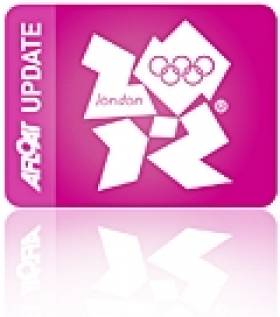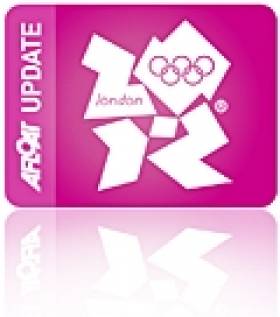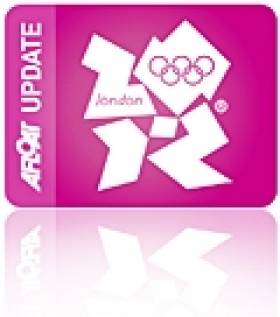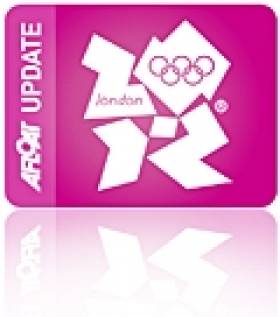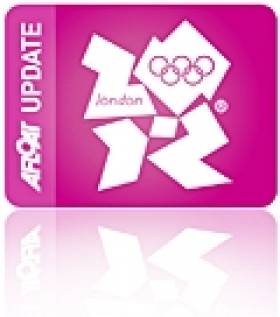Displaying items by tag: Anthony Shanks
Irish Olympic Keelboat Trials Starts this Month
Act one, scene one of Irish sailing's bid for Olympic glory in London next years kicks off this month when rival helmsmen Max Treacy and Peter O'Leary square up for the right to represent Ireland next July at the Olympic Regatta in Weymouth.
The Irish Star keelboat Olympic trials gets underway on May 24th on the waters off Medemblik, Holland as part of the massive ISAF Delta Lloyd regatta.
O'Leary with new crew (and triple Olympian) David Burrows will go head to head with Treacy and Anthony Shanks in a 23-boat fleet that has attracted all the top teams, a mirror of next year's Olympic regatta itself.
The two Irish boats haven't met since last August when O'Leary sensationally won Britain's Sail for Gold Olympic test event at Weymouth and Treacy withdrew with boat problems.
Since then O'Leary and Burrows have been training in the USA scoring a significant second overall at the Bacardi Cup in February.
Treacy and Shanks have proved a formidable combination clocking up some impressive results over a decade or so in the Star class competing first for a place for Athens 2004, then Beijing and now London. It is understood the pair are hooking up next week with long time training partner (and British Olympic Gold medalist) Ian Percy for an intensive two week training session.
While the first of the nomination trials is to be held in Holland, the second is in July in Weymouth but it's worth remembering the first chance of nation qualification – where 75% of Olympic slots are up for grabs – is not until December in Perth, Australia.
The new procedures set out for Olympic qualification were announced by the Irish Sailing Association in January.
The memory of the selection debacle from four years ago is still very much in mind. Back in 2008 a decision to send O'Leary instead of Treacy was made by an ISA selection committee rather than on the water trials, a move that was unsuccessfully appealed by Treacy to the Olympic Council of Ireland (OCI). It was a divisive period for Olympic sailing in Ireland.
Confirmation this week that both teams are entered for the Delta Lloyd regatta in Holland and both boats are also entered for Perth indicates the stage is set for the next episode of Star wars.
Irish Olympic Stars in Action in Weymouth
The clearest indication of Irish sailing form for the 2012 Olympics will be known this week when four Sports council carded sailors go into action in a massive regatta of 800 sailors at the Skandia Sail for Gold Regatta in Weymouth. Annalise Murphy is in the Laser Radial and in the Star class Max Treacy and Anthony Shanks go head to head with Peter O'Leary who the Irish Times says this morning has had a last mniute crew change. David Burrows is out and Germany's Frithjof Kleen is sailing as a late substitution.
If you took a wander around the fine old English seaside resort of Weymouth, you'd find a mix of motives for being there on this particular Sunday in August – the beach, the sea, the ice cream. Move round the bay a little to the Weymouth and Portland National Sailing Academy, where the elite of Olympic sailing are gathered for Skandia Sail for Gold 2010, and you'd think that the replies would be a little more focused – winning, perhaps? But you'd be wrong...
It might be the final event of this year's ISAF Sailing World Cup, not to mention the last but one Olympic class regatta at the 2012 venue before the main event, but not everyone is necessarily here to win. The Dutch 470 sailors, Lisa Westerhof and Lobke Berkhort have racked up five 470 World Championship titles between them, including the most recent, along with Olympic silver in Beijing for Lobke. But when Lisa was asked if they had a choice between going left on the race course to stay with their competition, and going right to learn more about the venue, she replied, "We might choose the right, but we'll have to see," adding with a laugh, "It's nice to have a good result, we're sportsmen, we like to win."
Lisa and Lobke are out of contention for the ISAF Sailing World Cup, but Emmanuelle Rol and Hélène Defrance are just one point behind their French compatriots overall, Ingrid Petitjean and Nadège Douroux. But Rol reckons they have a weakness in breezier conditions after a poor performance at the World Championships, and is hoping to establish that they have improved after training in the Mistral in Marseille, "For us, the result is important, but also to try to have good races in strong conditions, and of course, learn about the Olympic venue. And so far, we have learned that the weather is not as good as in Marseille." The last said, we're sure, purely in jest...
US Sailing Team AlphaGraphics meteorologist (and former holder of the same position for the Luna Rossa America's Cup team), Doug Charko reckoned that Rol and Defrance will have plenty of opportunity to check their heavy weather progress, "There's a low heading into the area, which will probably arrive for Tuesday. So ten to 15 knots for Monday, building during the day, and then Tuesday with the low passing over Scotland there's quite a wide range in the global models, so although I'm hedging my bets a little, I'd say 15 to 20 and gusting to 25 knots from the south-west, raining and unsettled." Things look a little better for the rest of the week, with moderate south-westerly sea breezes forecast – classic Weymouth conditions.
Another Women's 470 contender who theoretically doesn't need to learn much about the venue is double Olympic Yngling Gold medallist and Weymouth resident Sarah Ayton. After recently returning to sailing following the birth of her first child, Ayton and her crew Saskia Clark is not in contention for the overall ISAF Sailing World Cup. But Sarah nevertheless finds herself with a similar balancing act; "You've got to use the opportunity to learn, you don't get many opportunities with a world class fleet in this venue, so it is important to learn. But obviously, it is important to perform in the Olympic venue, so it is a real balancing act of trying things when you can, but bearing in mind the end results." When asked the left or right-side of the course question, she replied with a smile, "It would be hard not to stay with the competition."
Sarah was up on the stage for a very bling opening ceremony, the new Olympic venue dripping with medals two years early. Many of those present are sailing in the Star class, which has some serious star-wattage. Double Olympic-medallist and current Star World Champions, Iain Percy and Andrew Simpson had come straight from Team origin's win over current America's Cup holders, BMW Oracle, in the 1851 Cup.
For Iain Percy, it was a chance to learn about the venue, reckoning that they had to look at each Olympic venue afresh, in a much more analytical, professional way. But there were other reasons for coming to Weymouth, "Myself and Andrew do a lot of other sailing, and whenever we get back in the Star we always have a really good time, relax and enjoy it, old mates going out for a sail. So whenever we get a bit of a window in the calendar we jump at trying to get out in the Star for a bit of fun, and that's the main reason we're here."
Further Quotes
Lisa Westerhof (Holland, Women's 470, current World Champions), on their priorities for Skandia Sail for Gold; "We do set priorities during the year and our main goal this year was the World Championships. We use the World Cup to work with our processes and to develop equipment. We'll use this week to get to know the conditions in Weymouth and to get a feel for the water and the sailing conditions. But the weather and the systems - the low pressure and high pressure weather systems - the variety in the weather is comparable to Holland, so we feel at home."
Emmanuelle Rol (France, Women's 470, currently second in ISAF Sailing World Cup), on their priorities for Skandia Sail for Gold; "We are using the same equipment here as at the Worlds - developing gear will be the winter's task, we will try some new stuff then. We are quite a new crew together, so we had to work out our team work, and our next job will be to work on the equipment."
Iain Percy (Britain, Star, current World Champion), on the topic of keeping current with Olympic sailing, while balancing it with other sailing commitments; "I tried a little experiment after 2000 with the Finn, when I used to go back and have a race against the guys - and after nine months I felt pretty good, but then when I went back and tried it a couple of years later I was absolutely hopeless. So somewhere between your brain and your hands there's a memory that runs out after a certain amount of time."
O'Leary/Burrows Keep it Consistent at Star Europeans
The O'Leary/Burrows pairing posted a respectable 12th yesterday in the 132-boat Star Europeans in Italy, keeping them close to the top. Discards come into play after today's race, and on current points, the Treacy/Shanks team have a 20-point deficit to make up, despite standing to discard a 95th. They lie in 37th at present.
At the top, the German team of Polgar Johannes and Koy Markus, who have led from race one, had their first slip, posting a 21st, which allowed the second-placed team steal a march on the leaders and come within one point.
The relatively worthless Star Europeans website is HERE.
Treacy & Shanks Close the Gap at Star Europeans
With a fourth place in today's race, Max Treacy and Anthony Shanks are perfectly placed to take advantage of the discard when it comes into place and move up the leaderboard.
The Irish crews lie in 28th and 44th overall after three races, with the O'Leary/Burrows pairing ahead. If you take away the worst score from both teams as things stand, they are on equal points, with 52 points net, meaning that they are, in effect, even stevens.
After some initial inconsistency, the top ten is full of familiary names, with Torben Grael, George Szabo, Mateusz Kusznierewicz, Mark Mendelblatt and Xavier Rohart all within striking distance of the top, and more world champions within the top 20.
Results to date are HERE.
Inauspicious Start for Irish Stars
Ireland's two Star crews have struggled to make an impact in the initial stages of the Star Europeans, which started on Monday in Villareggio, Italy. A whopping 132 boats are taking part, with the entire fleet starting on one line for each race.
Peter O'Leary and David Burrows, sailing together for the first time, are the top Irish boat at present, lying in 43rd position, carrying a 44th and a 52nd in the two races so far. Max Treacy and Anthony Shanks are further back in 77th, with a scoreline including a 95th and 57th.
Racing continues today.
(PS: Bonus video below from photog Amory Ross)


























